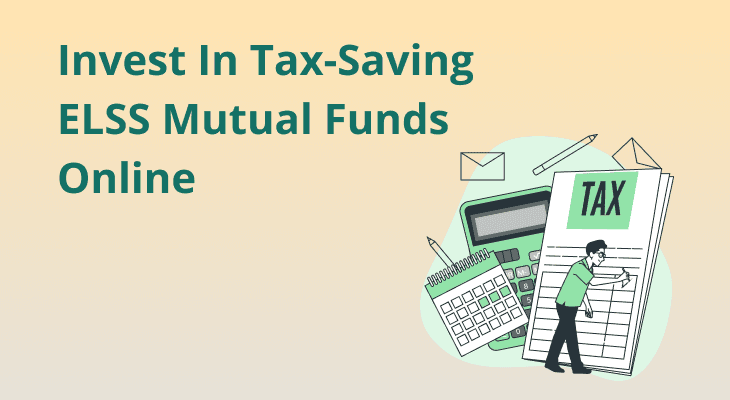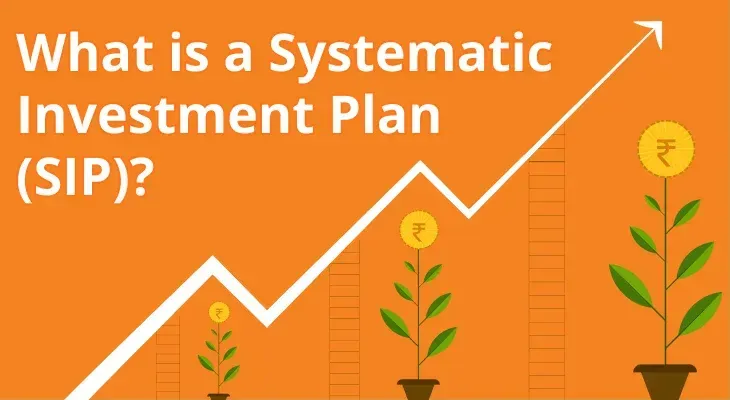
How To Invest In Tax-Saving ELSS Mutual Funds Online?
Equity-linked Savings Scheme (ELSS) mutual funds are one of the most popular tax-saving investment options in India. They offer tax benefits under Section 80C of the Income Tax Act while providing the potential for long-term capital appreciation. This guide explains how to invest in ELSS online, its benefits, tax implications, and factors to consider before investing.
What Are ELSS Mutual Funds?
ELSS mutual funds are diversified equity funds that primarily invest in stocks across various sectors and market capitalizations. They provide tax deductions of up to ₹ 1.5 lakh per financial year under section 80C and have a lock-in period of three years.
Key Features of ELSS Funds: - H3
- Tax Savings: Investments up to ₹ 1.5 lakh per year are eligible for tax deduction under Section 80C.
- Equity Exposure: Invests more than 65% of its corpus in equity and equity-related instruments, offering potential for higher returns.
- Lock-in Period: Three-year mandatory lock-in period, meaning your unit holdings cannot be withdrawn before this period ends.
- Potential for High Returns: As ELSS funds invest in equities, they have the potential to deliver better returns than traditional tax-saving instruments. But remember, equity also bring with it higher risk.
- Option for SIP or Lump Sum: You can invest in ELSS through Systematic Investment Plans (SIP) or via lump sum.
Benefits of Investing in ELSS Mutual Funds
ELSS funds provide multiple benefits, making them an attractive tax-saving investment option.
1. Tax Benefits Under Section 80C
- ELSS investments are eligible for deductions under Section 80C of the Income Tax Act.
- The maximum deduction allowed is ₹1.5 lakh per year, potentially saving up to several thousands in taxes (depending on your tax bracket).
2. Shortest Lock-in Period
- ELSS funds have a three-year lock-in which is shorter than most other tax-saving investments like PPF (15 years) and NSC (5 years).
3. Potential for High Returns
- As ELSS funds are equity-oriented, they offer higher return potential compared to fixed-income tax-saving options. But remember, equity investments are also high-risk.
- Long-term compounding helps generate substantial wealth.
4. Flexibility in Investment
- You can choose SIP or a lump sum investment based on your financial goals and affordability.
- Unlike other tax-saving instruments, there is no upper limit on investment. However, the tax benefit you will get is only up to ₹ 1.5 Lakhs.
5. Diversification and Professional Management
- ELSS funds invest across multiple sectors and companies, which diversifies your investment.
- They are managed by experienced fund managers who aim to maximise returns in the long run.
Steps to Invest in ELSS Mutual Funds Online
Investing in ELSS online is quick and hassle-free. Follow these steps:
1. Choose a Fund House or Investment Platform
- You can invest directly through mutual fund AMC websites, mutual fund distributors, or online zero-commission platforms like m.Stock.
2. Complete KYC Registration
- KYC compliance is mandatory to invest in mutual funds.
- Submit PAN card, Aadhaar, and bank details for e-KYC verification.
3. Select the Right ELSS Fund
- Compare ELSS funds based on past performance, fund manager expertise, risk appetite, and expense ratio, and turnover ratio of the fund.
4. Choose SIP or Lump Sum Investment
- SIP Investment: Invest small amounts regularly, minimising market volatility impact.
- Lump Sum Investment: Suitable for those with a high-risk appetite who want to invest a large sum at once.
5. Complete the Investment Process
- Link your bank account, enter the investment amount, and confirm the transaction.
- Start SIP auto-debit if choosing SIP mode for added convenience.
Remember to regularly monitor your tax saving ELSS fund’s performance and adjust investments in it, if required.
Tax Benefits Under Section 80C
ELSS is a tax-saving mutual fund eligible for deductions under Section 80C.
- Maximum Deduction: ₹ 1.5 lakh per financial year.
- Tax on Returns: ELSS returns are subject to Long-Term Capital Gains (LTCG) tax at 12.5% on gains exceeding ₹1.25 lakh per year.
- Tax-free Dividends Eliminated: Previously, ELSS dividends were tax-free in the hands of investors. However, under the new tax regime, dividends are added to the investor's income and taxed as per the applicable tax slab.
Factors to Consider Before Investing in ELSS
While ELSS mutual funds offer an attractive combination of tax benefits and wealth creation potential, it is important to evaluate certain factors before investing. ELSS funds are equity-oriented, meaning they come with market risks and fluctuations. Here are key aspects to consider before making an investment decision:
1. Risk Involved
ELSS funds invest primarily in stocks across different sectors and market capitalisation, making them subject to stock market volatility. Unlike fixed-income tax-saving instruments such as PPF or FDs, ELSS returns are not guaranteed and depend on market movements, which means you may experience gains or losses based on underlying stock performance.
2. Lock-in Period
Unlike tax-saving FDs that may allow early withdrawal with penalties, ELSS does not permit early redemptions. ELSS funds have a mandatory three-year lock-in period, and you cannot withdraw your investment before three years. Although this is the shortest lock-in period among tax-saving options, it still requires you to have a medium-term investment horizon.
If you invest through SIPs, each SIP installment is locked in separately for three years. For example, an SIP started in January 2024 will be redeemable in January 2027, while an SIP installment in February 2024 will be redeemable in February 2027.
3. Fund Selection and Performance Evaluation
Different ELSS funds have varying portfolio compositions, risk levels, and return histories. Selecting the right fund is crucial for maximising returns. While past performance does not guarantee future returns, it can provide insight into how well a fund has performed in different market conditions. A skilled fund manager can make a significant difference in an ELSS fund’s performance. Checking the fund manager's track record can be beneficial.
A well-diversified ELSS fund should have a mix of large-cap, mid-cap, and small-cap stocks to balance risk and return potential.
4. SIP vs Lump Sum Investment
ELSS funds allow investors to invest either through Systematic Investment Plans (SIP) or a lump sum investment. Choosing the right method depends on risk tolerance and market conditions.
SIPs helps mitigate market volatility by spreading investments over time and is well-suited for salaried individuals who want to invest regularly. This way you can average your cost of acquisition on the mutual fund units. Lump sum investments are suitable when markets are low, allowing you to potentially gain more as the market recovers.
5. Expense Ratio and Fund Charges
Mutual funds charge an expense ratio, which is a percentage of the fund’s total assets used to cover management fees and operational costs. Lower expense ratio results in higher returns over time. Direct ELSS plans have lower expense ratios than regular plans since they do not involve distributor commissions.
How to Redeem ELSS Investments?
After the three-year lock-in, ELSS funds can be redeemed as per investor requirements. The online mode is the most convenient way to do so. Here’s how the online redemption process works:
- Log in to your investment platform or AMC website.
- Remember that only those units that are not locked-in for the three year period will be available for redemption.
- Go to your portfolio or profile, select the ELSS fund and enter the number of units or the amount to redeem.
- The redemption amount is credited to the registered bank account.
Points to Remember:
- First-in-First-Out (FIFO) Rule: In SIP investments, each installment is locked in for three years, meaning not all units may be redeemable at once. For lump sum investments, it is more straightforward and all units purchased can be redeemed together after the lock-in period is over.
- Taxation on Redemption: LTCG tax applies at 12.5% on gains exceeding ₹1.25 lakh.
Conclusion
Tax saving ELSS mutual funds provide an excellent way to save taxes while growing wealth through equity investments. As equity investments give higher returns over a longer time period, ELSS mutual funds can be a preferred tax-saving option for long-term investors. Investing in ELSS online is simple and convenient, making it accessible for all types of investors. However, it is essential to assess fund performance, risk appetite, and investment goals before choosing an ELSS scheme.
FAQ
What are ELSS mutual funds, and how do they help in tax saving?
ELSS (Equitylinked Savings Scheme) mutual funds are tax-saving investments that offer deductions of up to ₹-1.5 lakh under section 80C of the Income Tax Act. They primarily invest in equity markets, providing potential long-term capital growth along with tax benefits.
How can I invest in ELSS mutual funds online?
You can invest in ELSS online through mutual fund websites, stockbroking platforms, or investment apps. The process involves KYC verification, selecting a fund, choosing between SIP or lump sum, and making the payment.
What documents are required to invest in ELSS funds online?
To invest in ELSS online, you need:
PAN card
Aadhaar card
Bank account details (with cheque or passbook copy)
Address proof
Passport-size photograph
A mobile-linked email ID for e-KYC verification
Can I invest in ELSS through SIP, or is a lump sum better?
Yes, ELSS allows both investment options. SIP is ideal for investors looking to reduce market volatility impact and invest regularly, while a lump sum investment may be suitable when the market is at a low point.
What is the lock-in period for ELSS funds?
ELSS funds have a mandatory three-year lock-in period, meaning you cannot withdraw your investment before this period. This is the shortest lock-in among all tax-saving investment options under Section 80C.
Are returns from ELSS mutual funds tax-free?
No, ELSS returns are subject to long-term capital gains (LTCG) tax. Gains above ₹1.25 Lakhs in a financial year are taxed at 12.5% without indexation benefits.
How do I choose the best ELSS mutual fund to invest in?
You can consider factors like past performance, fund manager expertise, expense ratio, portfolio diversification, and risk appetite to compare multiple ELSS funds before making an investment decision.
Can I redeem my ELSS investment after three years?
Yes, you can redeem your ELSS investment after the three-year lock-in period. However, for SIP investments, each installment has its own separate three-year lock-in period before it can be redeemed.
Is ELSS a safe investment option?
While they offer higher return potential than fixed-income tax-saving options, ELSS funds are equity-based and are subject to market risks and fluctuations.
What happens if I don’t withdraw my ELSS investment after three years?
There is no mandatory withdrawal requirement. If you don’t redeem your ELSS investment after three years, it will continue to remain invested and grow based on market performance.


